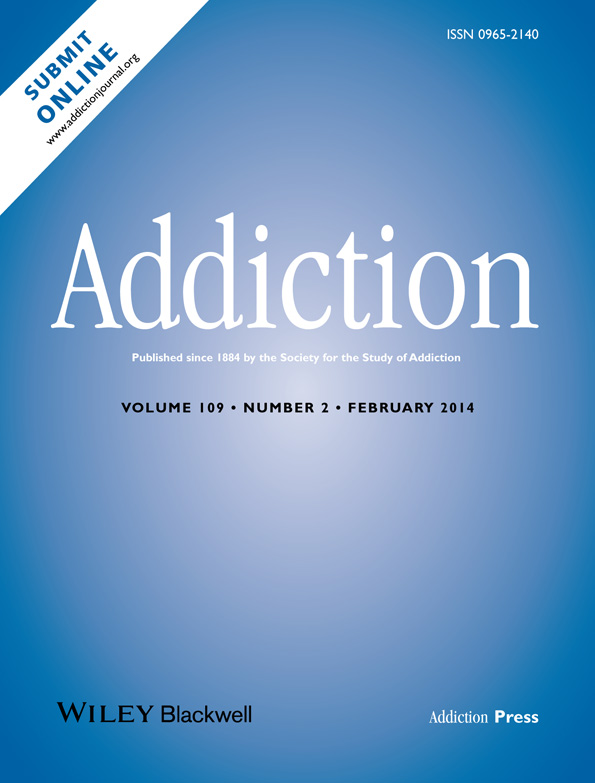Genetic and environmental influences on the ages of drinking and gambling initiation: evidence for distinct aetiologies and sex differences
Abstract
Aims
To investigate the genetic and environmental contributions to age at first drink (AFD) and age first gambled (AFG), assess their overlap and examine sex differences.
Design
Univariate twin models were fitted to decompose the variation in AFD and AFG into additive genetic, shared environmental and unique environmental factors. Bivariate genetic models were fitted to assess the genetic and environmental contributions to the sources of covariation in AFD and AFG.
Setting
National Australian Twin Registry.
Participants
A total of 4542 same-sex and opposite-sex twins aged 32–43 years, 42% male and 58% female.
Measurements
AFD and AFG were assessed via structured psychiatric telephone interviews. Age of onset was treated as both continuous and categorical (early/late onset).
Findings
AFD and AFG were modestly correlated (r = 0.18). Unique environmental influences explained a substantial proportion of the variation in both AFD (0.55, 95% confidence interval [CI] = 0.50–0.61) and AFG (0.66, 95% CI = 0.59–0.72), but these influences were uncorrelated (rE = 0.01). Additive genetic factors explained a notable proportion of variation in AFG (0.21, 95% CI = 0.003–0.39), while shared environmental factors were important for AFD (0.31, 95% CI = 0.15–0.46). Among men, genetic factors influenced variation in AFG but not in AFD and shared environmental factors influenced variation in AFD but not in AFG. Among women, shared environmental factors influenced variation in both AFD and AFG, but these environmental factors were not significantly correlated (rC = 0.09).
Conclusions
Among Australian twins, age at first drink and age first gambled are influenced by distinct unique environmental factors, and the genetic and environmental underpinnings of both phenotypes differ in men and women.




